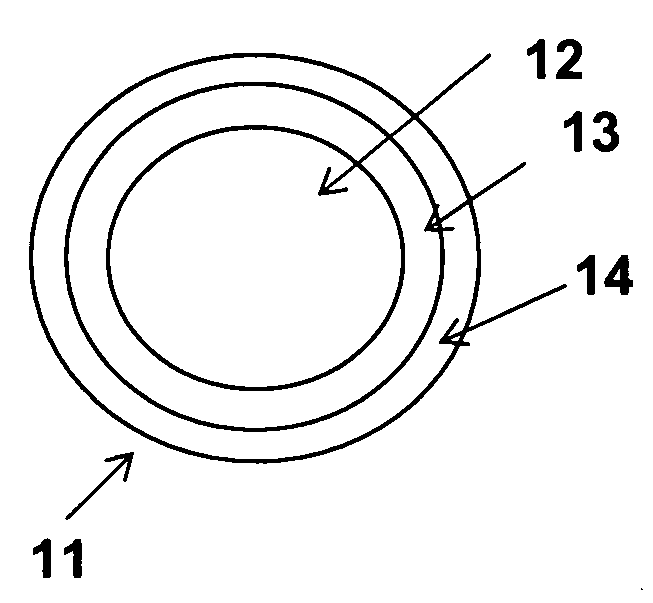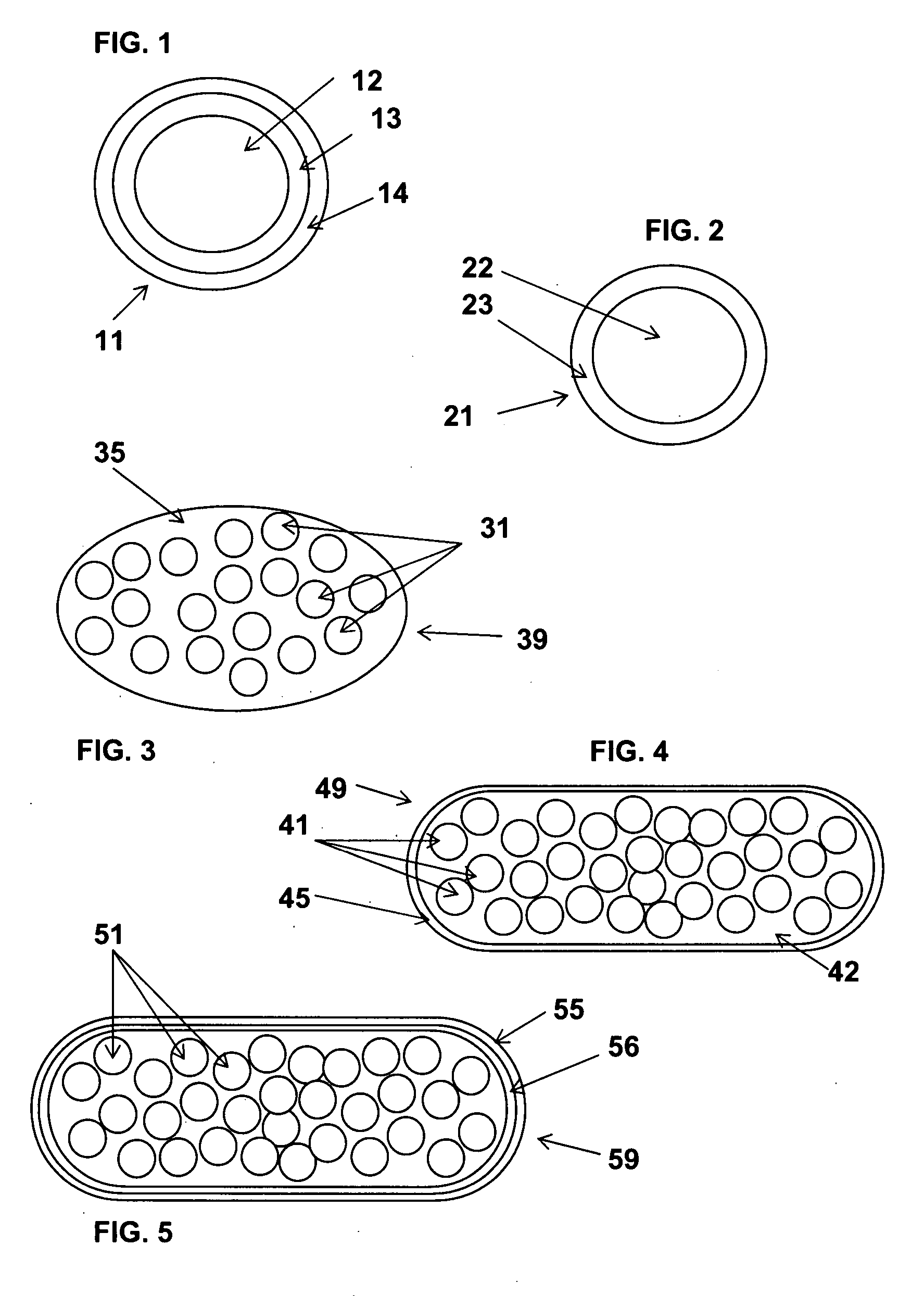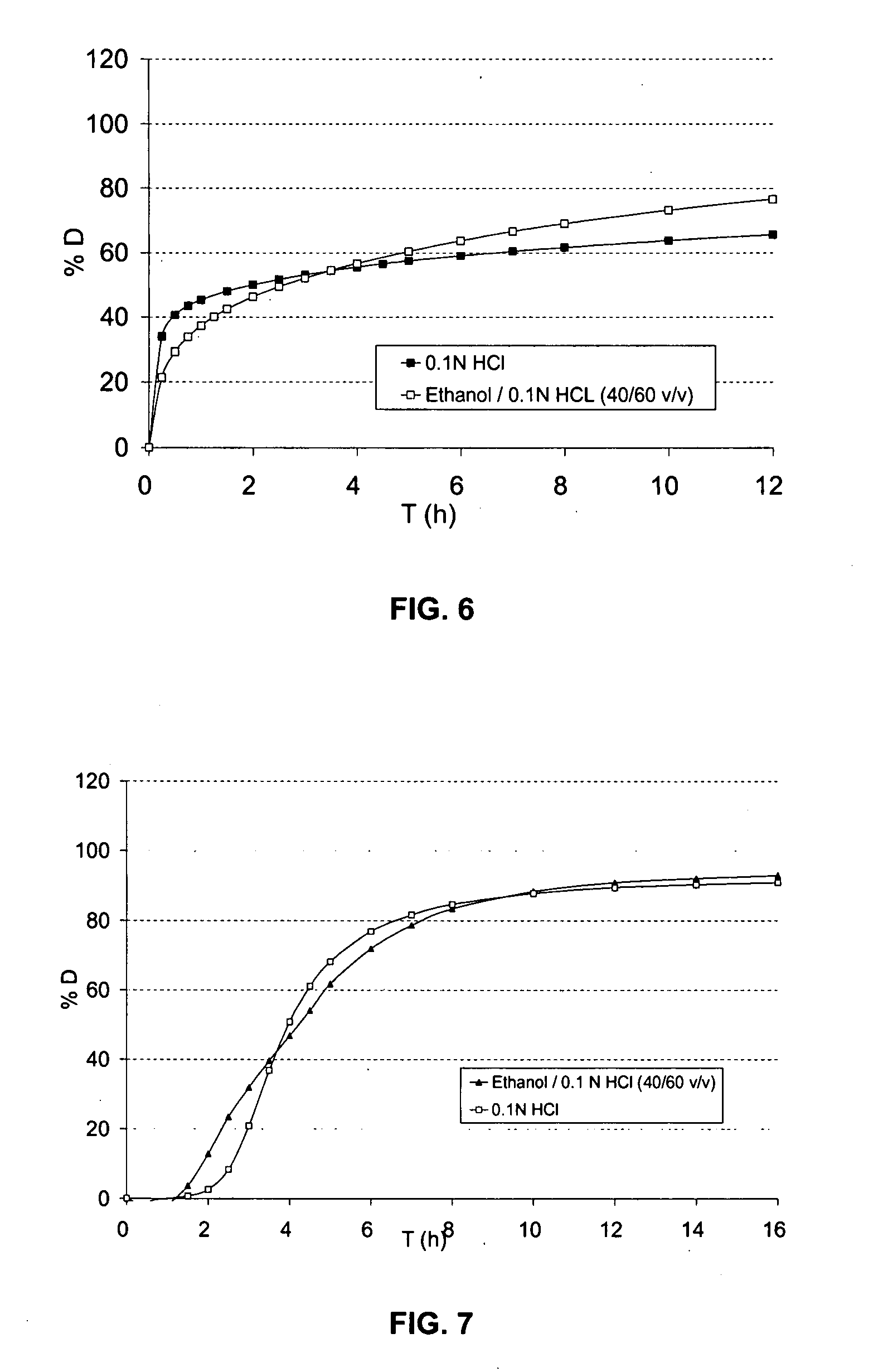Multimicroparticulate pharmaceutical forms for oral administration
a multi-microparticulate, oral technology, applied in the direction of microcapsules, capsule delivery, organic active ingredients, etc., can solve the problems of unwanted acceleration of the ap release, achieve greater therapeutic safety, avoid or limit the ap, and improve the effect of
- Summary
- Abstract
- Description
- Claims
- Application Information
AI Technical Summary
Benefits of technology
Problems solved by technology
Method used
Image
Examples
example 1
Acyclovir Capsles—the Agent D is Contained in the Inert Support of the Microparticles
Step 1:
[0280] 288 g of acyclovir and 72 g of hydroxypropyl cellulose (Klucel EF® / Aqualon) are dispersed in 840 g of water. The suspension is sprayed onto 240 g of guar gum (Danisco) in a fluidized air bed (Glatt GPCG1).
[0281] 1.4 g of ethyl cellulose (Ethocel 20 Premium / Dow), 9.24 g of cellulose acetate-butyrate (CAB 171-15 / Eastman), 1.68 g of polysorbate 80 (Tween 80 / Uniqema) and 1.68 g of triethyl citrate (Morflex) are solubilized in a mixture composed of 94% of acetone and 6% of water. This solution is sprayed onto 56 g of acyclovir granules (prepared in step 1).
[0282] The microparticles obtained are then placed in a size 0 gelatin capsule (to give an acyclovir dose of 150 mg per capsule).
[0283] The profiles of dissolution D (%) as a function of time (h) in 900 ml of 0.1 N HCl and in 500 ml of an ethanol / 0.1 N HCl mixtur (40 / 60 v / v), with paddle stirring at 75 rpm, are given in FIG. 6:
[028...
example 2
Metformin Capsule—the Agent D is Contained in the Capsule Coating
Step 1:
[0285] 500 g of metformin are dispersed in 2586 g of water. The solution is sprayed onto 450 g of cellulose spheres (Asahi-Kasei) in a Glatt GPCG1.
Step 2:
[0286] 228 g of ethyl cellulose (Ethocel 20 Premium / Dow), 30 g of povidone (Plasdone K29-32 / International Specialty Products Inc.), 12 g of polyoxyl-40 hydrogenated castor oil (polyoxyetlylene glycerol trihydroxystearate: Cremophor RH 40 / ISP) and 30 g of castor oil are solubilized in a mixture composed of 60% of acetone and 40% of isopropanol. This solution is sprayed onto 700 g of metformin granules prepared in step 1.
[0287] The microparticles obtained are then placed in a size 2 gelatin capsule (to give a metformin dose of 150 mg per capsule). This capsule is then film-coated with a solution of sodium carboxymethyl cellulose (Blanose 7 LF / Aqualon) at a rate of 20 mg of sodium carboxymethyl cellulose per 60 mg of gelatin.
[0288] The dissolution profiles...
example 3
Acycovir Capsules—the Agent D is Contained in the Inert Support of the Microparticles and in the Capsule Constituent
Step 1:
[0290] 288 g of acyclovir and 72 g of hydroxypropyl cellulose (Khicel EF® / Aqualon) are dispersed in 840 g of water. The suspension is sprayed onto 240 g of guar gum (Danisco) in a Glatt GPCG1.
Step 2:
[0291] 9.84 g of ethyl cellulose (Ethocel 20 Premium / Dow), 0.24 g of povidone (Plasdone K29-32 / ISP), 0.24 g of sorbitan monooleate (Span 80 / Uniqema) and 1.68 g of castor oil (Oarbit Huilerie) are solubilized in a mixture composed of 60% of acetone and 40% of isopropanol. This solution is sprayed onto 48 g of acyclovir granulets (prepared in step 1).
[0292] The microparticles obtained are then placed in a size 0 vegetable capsule (based on hypromellose [or HPMC]) (to give an acyclovir dose of 150 mg per capsule).
[0293] The dissolution profiles in 900 ml of 0.1 N HCl and in 500 ml of an ethanol / 0.1 N HCl mixture (40 / 60 v / v), with paddle stirring at 75 rpm, are g...
PUM
| Property | Measurement | Unit |
|---|---|---|
| diameter | aaaaa | aaaaa |
| diameter | aaaaa | aaaaa |
| diameter | aaaaa | aaaaa |
Abstract
Description
Claims
Application Information
 Login to View More
Login to View More - R&D
- Intellectual Property
- Life Sciences
- Materials
- Tech Scout
- Unparalleled Data Quality
- Higher Quality Content
- 60% Fewer Hallucinations
Browse by: Latest US Patents, China's latest patents, Technical Efficacy Thesaurus, Application Domain, Technology Topic, Popular Technical Reports.
© 2025 PatSnap. All rights reserved.Legal|Privacy policy|Modern Slavery Act Transparency Statement|Sitemap|About US| Contact US: help@patsnap.com



